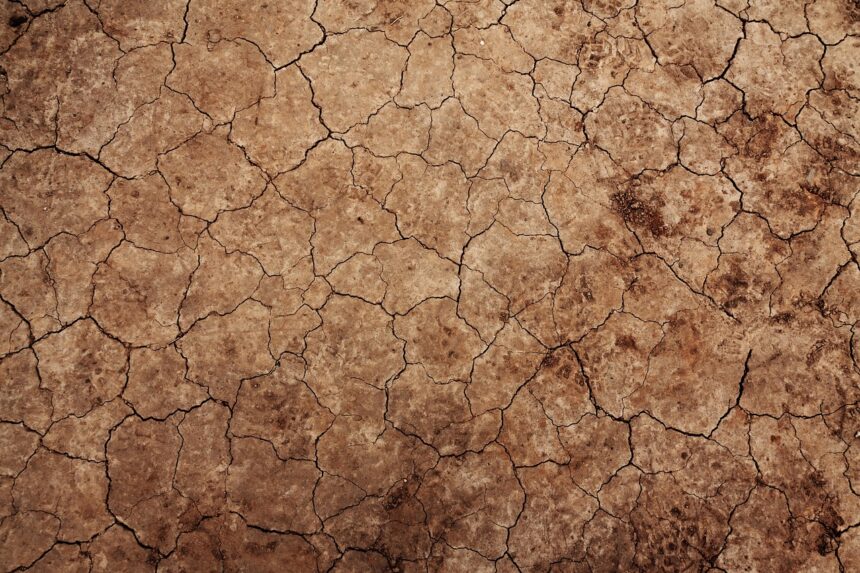Photo by PublicDomainPictures on Pixabay
In the realm of agriculture and environmental science, soil erosion is a significant concern. This natural process, which involves the displacement of the topmost layer of soil, is a threat to our planet’s health and agricultural productivity. This comprehensive guide will delve into the causes, types, impacts, and measures to prevent and reduce soil erosion, crucial to sustaining our food supply and preserving our environment.
Defining Soil Erosion
Soil erosion is a geological phenomenon where earth’s top layer, also known as topsoil, is displaced by natural forces like water and wind, or exacerbated by human activities, such as deforestation and poor farming practices. This topsoil contains essential nutrients vital to plant growth and productivity, making it an invaluable resource for agriculture. When soil erosion occurs, it reduces the soil’s ability to retain nutrients and moisture, leading to decreased agricultural productivity and potential environmental damage.
Unpacking the Causes of Soil Erosion
Soil erosion is driven by both natural and human-induced factors. These causes often interact, leading to a complex and multifaceted problem.
Natural Causes of Soil Erosion
- Wind Erosion: In areas where land is flat, bare, and exposed to strong winds, soil particles can be easily dislodged and carried away, leading to significant soil loss.
- Water Erosion: Excessive rainfall or snowmelt can result in the displacement of soil particles. The severity of water erosion is influenced by the intensity of the rain or snowmelt, the slope of the land, and the type of vegetation cover.
- Climate Change: Changes in weather patterns, including more frequent and intense rain events, hotter days, and increased incidence of droughts, can escalate soil erosion rates.
Anthropogenic Causes of Soil Erosion
- Unsustainable Agricultural Practices: Certain farming activities, such as overgrazing, deforestation, monocropping, and excessive use of agrochemicals, can accelerate soil erosion.
- Deforestation: Clearing of trees for agricultural expansion or other purposes leaves the soil unprotected, making it susceptible to erosion.
- Infrastructure Development: Construction activities, especially on slopes, can destabilize the soil structure, leading to erosion.
- Overgrazing: Excessive grazing by livestock can strip the land of vegetation cover, leaving the soil exposed to erosive forces.
Examining the Types of Soil Erosion
Soil erosion can be classified into various types, depending on the agents causing it and the nature of the erosion process.
Water Erosion
Water erosion occurs when rainfall, snowmelt, or floods wash away the topsoil. It can be further divided into:
- Sheet Erosion: Where a thin layer of topsoil is removed over a large area.
- Rill Erosion: Characterized by small, narrow channels formed by running water.
- Gully Erosion: Involves the formation of larger channels or gullies due to intense water flow.
- Bank Erosion: The undercutting and collapsing of riverbanks due to flowing water is known as bank erosion.
Wind Erosion
Wind erosion involves the displacement of loose, dry, and finely granulated soil particles by wind. This type of erosion often leads to the formation of dust storms, especially in arid and semi-arid regions.
Impacts of Soil Erosion
Soil erosion has significant environmental, economic, and societal consequences.
Environmental Impacts
- Loss of Topsoil: Erosion primarily affects the topsoil, which is rich in organic matter and nutrients necessary for plant growth.
- Water Pollution: Eroded soil often ends up in water bodies, leading to sedimentation, water pollution, and destruction of aquatic habitats.
- Land Degradation: Severe soil erosion can result in the formation of unproductive lands or even deserts, a process known as desertification.
- Biodiversity Loss: Soil erosion can cause loss of habitat and decrease in biodiversity.
Economic and Societal Impacts
- Decreased Agricultural Productivity: Soil erosion reduces the fertility of the land, leading to decreased crop yields and financial losses for farmers.
- Infrastructure Damage: Soil erosion can lead to sedimentation and flooding, causing damage to infrastructure like roads, bridges, and buildings.
- Food Security Issues: Large-scale soil erosion can threaten food security by reducing the amount of arable land available for crop production.
Strategies to Prevent and Reduce Soil Erosion
Preventing and reducing soil erosion requires a combination of sustainable farming practices and land management strategies.
- Crop Rotation: Alternating different types of crops can help maintain soil structure and fertility, reducing the risk of erosion.
- Cover Crops: Planting cover crops can protect the soil from erosion by providing ground cover and improving soil structure.
- Terracing: In hilly areas, creating flat areas or terraces can slow down water runoff, reducing soil erosion.
- Agroforestry: Integrating trees into farming systems can protect the soil from erosion by providing cover and improving soil structure.
- Conservation Tillage: Reducing tillage can help maintain soil structure and organic matter, reducing the risk of erosion.
- Restoration of Degraded Lands: Restoring lands that have been degraded due to erosion can help improve soil health and productivity.
Preventing soil erosion is crucial for the sustainability of our food systems and the health of our environment. By implementing these strategies, we can protect our soil resources for future generations.


